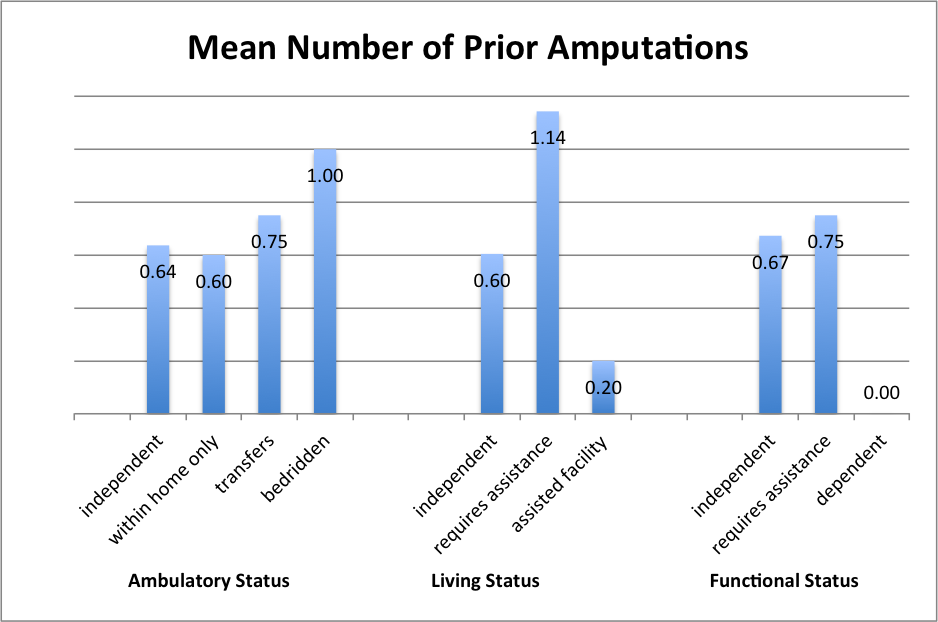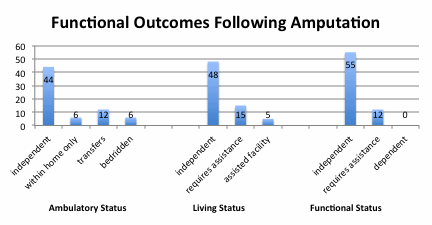|
|
 |
Back to Annual Symposium Program
Functional Outcomes After Amputation: Assessment of Independence and Ambulation
Amani D. Politano, MD, Mary T. Howell, BS, John W. Melson, BS, Itse Begho, BS, Gilbert R. Upchurch, Jr., MD, Kenneth J. Cherry, MD, Margaret C. Tracci, MD JD.
University of Virginia, Charlottesville, VA, USA.
OBJECTIVE:
We have previously described the clinical characteristics and outcomes of patients undergoing lower extremity amputation. In the present survey, we sought to evaluate the current functional, ambulatory, and living status of patients who have undergone amputations and investigate associations between these functional outcomes and patient clinical and demographic characteristics.
METHODS:
Operating room records were reviewed for lower extremity amputations between August 2007 and August 2011. Medical records, including operative notes and clinic visits, were reviewed for clinical data including operative details, wound healing, and mortality. The social security death master file was also reviewed for mortality. Telephone surveys were conducted in July 2013 to assess patient ambulatory, living, and functional status.
RESULTS:
Two hundred sixty three individual patients were identified. Of those, 108 (41%) were deceased at the time of survey. Of the 155 patients identified as living, 68 completed the survey (44%, summarized in figure). Dialysis dependence was associated with transfer-only ambulatory status and being homebound. Male gender was associated with independent functional status. All survey responders were able to complete their activities of daily living with no or minimal assistance. For survey responders, an increased number of prior amputations was associated with declining ambulatory status and a trend towards more dependent living and functional status.
DISCUSSION:
Mortality remains distressingly high in this population and, concerningly, quantification of true mortality may be significantly underestimated by use of medical record alone. Among surviving patients, many remain ambulatory and independent, regardless of level of amputation. The ability to provide outcome data with regard to independent living and functional status following amputation can help create realistic expectations and guide patient and physician decisionmaking when discussing treatment options. An additional challenge in managing this complex and at-risk population is the difficulty of maintaining follow up, as evidenced by the large group of patients (56%) assumed to be living but who could not be contacted based on information available through the medical record.


Back to Annual Symposium Program

|



